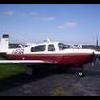speed brakes
-
Members Online
- Bartman
- 1980Mooney
- hammdo
- noonecaresworkharder
- TCC
- Rick7576
- Mac80
- Kerrville
- ohdub
- Vance Harral
- ragedracer1977
- Captainhog
- kaba
- AdamJD
- PeteMc
- rickseeman
- jlunseth
- WilliamR
- BrianWilkins
- Andy95W
- Flyler
- kowabunga
- steveP
- Shadrach
- TMass
- 4cornerflyer
- mgtrevor
- lanejacobs84
- hubcap
- Stealth Mooney
- Hank
- squawkvfr
- eman1200
- donkaye
- dkkim73


Recommended Posts
Join the conversation
You can post now and register later. If you have an account, sign in now to post with your account.